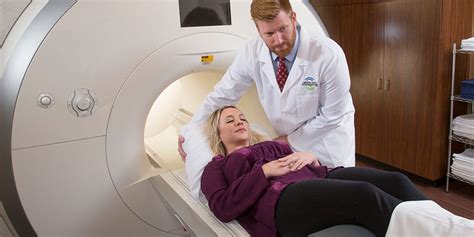When it comes to medical imaging, two of the most common technologies used are CT (Computed Tomography) scans and MRI (Magnetic Resonance Imaging) scans. Both CT and MRI technologies are used to create detailed images of the internal structures of the body, but they work in different ways and are used for different purposes. In this article, we will explore the key differences between CT tech and MRI tech, including how they work, their applications, and their advantages and disadvantages.
What is CT Tech?

CT tech, also known as computed tomography, uses X-rays and computer technology to produce detailed cross-sectional images of the body. During a CT scan, the patient lies on a table that slides into a large, doughnut-shaped machine. The machine emits X-rays, which pass through the body and are detected by sensors on the opposite side of the machine. The sensors send the data to a computer, which reconstructs the images.
What is MRI Tech?

MRI tech, also known as magnetic resonance imaging, uses a strong magnetic field and radio waves to produce detailed images of the body's internal structures. During an MRI scan, the patient lies on a table that slides into a large, cylindrical machine. The machine emits a strong magnetic field, which aligns the hydrogen atoms in the body. Radio waves are then sent through the body, causing the hydrogen atoms to emit signals, which are detected by sensors in the machine. The sensors send the data to a computer, which reconstructs the images.
Key Differences between CT Tech and MRI Tech
While both CT and MRI technologies are used to create images of the body's internal structures, there are several key differences between them.
- Imaging Technology: The most obvious difference is the imaging technology used. CT scans use X-rays, while MRI scans use a strong magnetic field and radio waves.
- Image Quality: MRI scans typically produce higher-quality images than CT scans, especially when it comes to soft tissue imaging.
- Radiation Exposure: CT scans use X-rays, which means that patients are exposed to radiation. MRI scans, on the other hand, do not use radiation.
- Scan Time: CT scans are generally faster than MRI scans, with scan times ranging from a few seconds to several minutes. MRI scans, on the other hand, can take anywhere from 15 to 90 minutes.
- Cost: CT scans are generally less expensive than MRI scans.
- Applications: CT scans are often used for emergency situations, such as diagnosing injuries or illnesses. MRI scans are often used for more complex diagnoses, such as cancer or neurological disorders.
Advantages of CT Tech
- Fast Scan Time: CT scans are generally faster than MRI scans, making them ideal for emergency situations.
- Wide Availability: CT scans are widely available in hospitals and imaging centers.
- Low Cost: CT scans are generally less expensive than MRI scans.
- Good for Emergency Situations: CT scans are often used for emergency situations, such as diagnosing injuries or illnesses.
Disadvantages of CT Tech
- Radiation Exposure: CT scans use X-rays, which means that patients are exposed to radiation.
- Lower Image Quality: CT scans typically produce lower-quality images than MRI scans, especially when it comes to soft tissue imaging.
- Not Suitable for Some Patients: CT scans are not suitable for patients with certain medical conditions, such as kidney disease or thyroid disease.
Advantages of MRI Tech
- High-Quality Images: MRI scans typically produce higher-quality images than CT scans, especially when it comes to soft tissue imaging.
- No Radiation Exposure: MRI scans do not use radiation, making them a safer option for patients.
- Good for Complex Diagnoses: MRI scans are often used for more complex diagnoses, such as cancer or neurological disorders.
Disadvantages of MRI Tech
- Long Scan Time: MRI scans can take anywhere from 15 to 90 minutes, making them less ideal for emergency situations.
- Expensive: MRI scans are generally more expensive than CT scans.
- Not Suitable for Some Patients: MRI scans are not suitable for patients with certain medical conditions, such as metal implants or claustrophobia.
Gallery of CT and MRI Scans






FAQs
What is the difference between a CT scan and an MRI scan?
+A CT scan uses X-rays and computer technology to produce detailed cross-sectional images of the body, while an MRI scan uses a strong magnetic field and radio waves to produce detailed images of the body's internal structures.
Which is better, a CT scan or an MRI scan?
+Both CT and MRI scans have their own advantages and disadvantages. CT scans are generally faster and less expensive, but they use radiation and may not produce high-quality images. MRI scans, on the other hand, produce high-quality images and do not use radiation, but they are generally more expensive and may not be suitable for emergency situations.
What are the risks associated with CT scans?
+CT scans use X-rays, which means that patients are exposed to radiation. This can increase the risk of cancer and other health problems. Additionally, CT scans may not be suitable for patients with certain medical conditions, such as kidney disease or thyroid disease.
In conclusion, while both CT and MRI technologies are used to create images of the body's internal structures, they work in different ways and are used for different purposes. CT scans use X-rays and computer technology to produce detailed cross-sectional images, while MRI scans use a strong magnetic field and radio waves to produce detailed images. Both technologies have their own advantages and disadvantages, and the choice between them depends on the specific needs of the patient.
